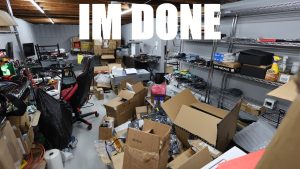Before Building the Metaverse, Blockchain Needs an Operating System
3 years ago CryptoExpert
Understanding what the metaverse is starts with understanding what the metaverse is not.
The metaverse is not an enclosed environment with strict rules and guidelines. It’s not a specific destination. The metaverse is not virtual reality and it’s not a video game.
“The metaverse is akin to cyberspace,” said Tony Tran, founder, CEO and president of Peer, a startup building the blockchain-powered technology necessary to enable mass adoption of the metaverse.
Just like cyberspace isn’t a specific place, the metaverse is notional—a metaphor, he said.
“We think of the metaverse as a precursor to what we’re calling the ambient web, an extension of today’s web that is mapped to the real world,” Tran told Decrypt.
‘The real utility will come from users’
If that sounds like the sort of thing that’s inaccessible and incomprehensible to the average person, that’s because it is. It’s hard to conceive of what the ambient web means in practice.
Which is why Peer is focusing on “creating the very best consumer experience for blockchain technology,” Tran said. “We’ve figured out how to work with blockchain to make products that serve people better and we’re starting with a social network,” he explained. “Ultimately, we aim to change the tech landscape for the better in the near future.”
“We think of the metaverse as a precursor to what we’re calling the ambient web.”
Engaging with the ambient web will require new types of software, an entirely new breed of device and an operating system for blockchain that will help open up the metaverse for regular people.
Blockchain’s true potential hasn’t been unlocked yet, because “the real utility will come from users, not developers,” Tran said.
“The A-ha moment hasn’t arrived for blockchain,” he added. “Developers are dictating right now because the tech is so new, but it is not the correct development model. The last 30 years of computing has given us one truism: it is always about users.”
Bringing blockchain to the masses
Part of the problem is that developers are focused either on building decentralized apps (dapps) or on building the blockchain itself, rather than delivering consumer-facing solutions with a straightforward user interface that lets them tap directly into blockchain technology.
“Everyone’s working on trying to make the blockchain secure, fast and as decentralized as possible, but we contend that’s not the right problem to solve for,” Tran said. “It’s like, why are you building high-speed highways without any cities?”
Without an OS that opens the door for regular people, blockchain technology will remain the preserve of a technically-minded elite, who primarily use it to play elaborate games of “hot potato,” Tran said.
“To bring blockchain to the masses, we have to do what the desktop experience did for the command line user interface.”
“Everything in blockchain revolves around trading, from tokens to NFTs,” he said. “But in order to bring blockchain to the masses, we have to do what the desktop experience did for the command line user interface—we need to hide the complexities of the blockchain and expose possibilities so that normal people can use it.”
What, when, where
To bring about the future of ambient computing, Peer’s road map includes reimagining software, hardware and advanced AI.
Peer, which launched the mainnet of its high-speed blockchain in March, is working on the first phase this year, which involves creating a visual architecture for the concepts of time, space and context in the metaverse.
Context is the missing link between the online experiences we’ve become familiar with and ambient computing.
“Steve Jobs often said humans build tools that amplify our inherent abilities,” said Tran. “He believed a computer amplifies the mind by making it faster and more efficient. It dawned on me that if we can just figure out what blockchain amplifies, we will know how to approach the user experience.”
That led to Peer’s novel approach, in which blockchain is envisioned as a “programmable equivalent of the physical world,” he explained. “Everything in the physical world can be boiled down to Matter, Space, and Time. Web1 gave us the matter via data. Web2 gave us space via maps. Web3 gives us time via blockchain. If we combine it, then what we have is an ambient web where the data is mapped to the physical world with the properties of time.”
The leap to an ambient web will come when regular people have the tools to express their physical reality in the digital world, to create content for the metaverse, and to easily find it and add to it. “In other words, blockchain amplifies experience,” said Tran.
To bring this concept to reality, Peer is developing a web3 social networking platform that discards the notion of a linear social feed to enhance experience. Instead of simply posting to a news feed that scrolls up or down, users will create immutable content on the blockchain that can live at any point in time—past, future or present—and anywhere.
“Everything in the physical world can be boiled down to Matter, Space, and Time. Web1 gave us the matter via data. Web2 gave us space via maps. Web3 gives us time via blockchain.”
Imagine being able to navigate to the actual time and place where a particular image was taken, say a photo of yourself as a baby, a child’s graduation, an event in history or even the marker for something that hasn’t happened yet.
“When you say ‘blockchain,’ people think ‘ledger,’” Tran said. “But if you apply it metaphysically, what you really have is an operating system for experiences. Blockchain as an Operating System—or BOS for short. The BOS will enable the ambient web, which will lead to a new class of devices that are no longer personal, they’re shared.”
The ambiance of the ambient web
It can be difficult to wrap your mind around the idea of an ambient web in part because the hardware to truly experience it doesn’t yet exist, although Peer has developed several prototypes for this new class of device.
But think of it like this: The web as we know it today is about trying to digitize a flat version of the world so that people can experience it through their devices. The ambient web will do the same, but in reverse.
“Rather than bringing the physical world into cyberspace, we’re beginning to map cyberspace directly on the physical world,” Tran said. “It’s not immersion, where you stand still, strap your head to a device, and drag your avatar across virtual space—but presence, where the web can inhabit the space where you are. That’s the metaverse.”
This new architecture for experiencing the metaverse creates a host of novel opportunities that can be built on blockchain, including new types of marketplaces, business models and new forms of digital content.
For example, someone could create an NFT that requires people to visit a specific place in order to mine it. Although it would be possible to digitally slide to that location using an app, like the social app Peer is devising, the person would have to physically go to the location in order to acquire the NFT and add it to their wallet.
Or say you want to sell a product or service that isn’t available yet but will be at a set point down the line, not unlike a pork belly future. “I could post it today,” Tran said, “get buyers to deposit into a smart contract and, when the day comes, it’ll be sold.”
A company could also create an augmented reality experience that allows people to attend a past event—live.
Say Pepsi wants to revive the Pepsi Generation, Tran said. Pepsi could recreate a modern version of Michael Jackson dancing in the street and launch it exactly where and when it originally happened. People will be able to slide the timeline back in order to experience it for themselves as if it were 1983.
Similarly, if you were to record a scene at a particular time and place, in the future you could “roll back” the timeline to view it as it was recorded; rather like a live version of Google’s Street View.
An operating system for blockchain would make that possible and eventually lead to the creation of ubiquitous blockchain devices so that anyone can experience the ambient web and participate in the metaverse.
“This really is just the beginning for this technology,” Tran said. “There is no ceiling.”
Peer is launching a new crowd-sale format called an Initial Coin Exchange (ICX), on June 27 on the Peer mainnet. The ICX is a proof-based framework that requires product traction, IP traction, and business diligence on par with Silicon Valley startups. To find out more, head to https://peer.inc
Sponsored post by Peer
This sponsored article was created by Decrypt Studio. Learn More about partnering with Decrypt Studio.
Want to be a crypto expert? Get the best of Decrypt straight to your inbox.
Get the biggest crypto news stories + weekly roundups and more!













